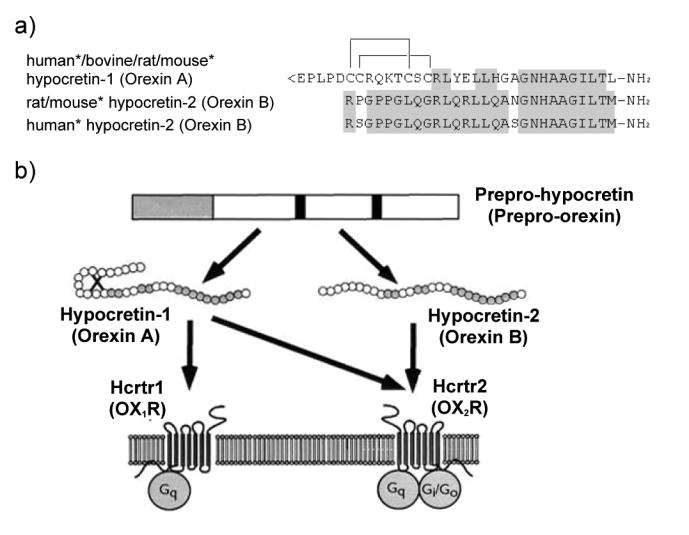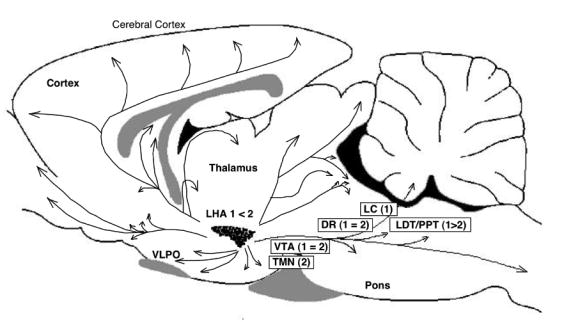Fig. 4. (a) Structures of mature hypocretin-1 (orexin-A) and hypocretin-2 (orexin-B) peptides. (b) Schematic representation of the hypocretin (orexin) system. (c) Projections of hypocretin neurons in the rat brain and relative abundances of Hcrtr 1 and 2.


(a) The topology of the two intrachain disulfide bonds in orexin-A is indicated in the above sequence. The shaded areas indicate the amino acid identities. Asterisks indicate that human and mouse sequences were deduced from the respective cDNA sequences and not from purified peptides. Hypocretin-1 (orexin-A) and hypocretin-2 (orexin-B) are derived from a common precursor peptide, prepro-hypocretin (prepro-orexin). (b) The actions of hypocretins are mediated via two G protein-coupled receptors named hypocretin receptor 1 (Hcrtr 1) and hypocretin receptor 2 (Hcrtr 2), also known as orexin-1 (OX1R) and orexin-2 (OX2R) receptors, respectively. Hcrtr 1 is selective for hypocretin-1, whereas Hcrtr 2 is nonselective for both hypocretin 1 and hypocretin 2. Hcrtr 1 is coupled exclusively to the Gq subclass of heterotrimeric G proteins, whereas in vitro experiments suggest that Hcrtr 2 couples with Gi/o, and/or Gq. (adapted from Sakurai 2003) (c) Hypocretin-containing neurons project to these previously identified monoaminergic and cholinergic and cholinoceptive regions where hypocretin receptors are enriched. Impairments of hypocretin input may, thus, result in cholinergic and monoaminergic imbalance and generation of narcoleptic symptoms. VTA, ventral tegmental area; SN, substantia nigra; LC, locus coeruleus; LDT, laterodorsal tegmental nucleus; PPT, pedunculopontine tegmental nucleus; PRF, pontine reticular formation; BF, basal forebrain; VLPO, ventrolateral preoptic nucleus; LHA, lateral hypothalamic area; TMN; tuberomamillary nucleus; DR, dorsal raphe.
